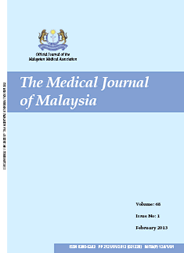MJM, Vol 70 Supplement 1 September 2015
Spatial distribution of dengue vectors in Malaysia
*Institute for Public Health, Ministry of Health Malaysia, **Lipis District Health Office, Pahang Darul Makmur, ****Sarawak State Health Department, Sarawak,****Penampang Division Health Office, Sabah, *****Kedah State Health Department, Kedah Darul Aman, *******Vector Borne Disease Sector, Ministry of Health, Malaysia
ABSTRACT
Introduction: Geographic Information System (GIS) has been widely used in mapping the incidence of infectious diseases and also vectors. The map produced can be used in planning for surveillance and control activities. Dengue has been one of the major public health problems in Malaysia. The cases increased dramatically and the case fatality rate was also very high. The information on the distribution of the vectors is crucial in targeting the culprit for dengue. This paper examines the distribution of dengue vectors in Malaysia for the year 2014.
Method: The data regarding the species found in the locality and the spatial information were compiled from eDengue database and from surveillance activities that were done by Entomology Unit in the states. The data were then cleaned and verified. Analysis and mapping were done using ArcGIS software.
Results: A total of 7025 localities were identified with complete spatial and vector species information. More than half of the localities (69.5%) were positive with Aedes albopictus. Both species (Ae. Albopictus and Ae. aegypti) were found in 16.9% of the localities. Kuala Lumpur, Perak and Selangor have the highest number of localities with mixed species. Majority of the localities in Kelantan were positive with Ae.aegypti whereas in Terengganu, majority of the localities were positive with Ae. albopictus.
Conclusion: The distribution map may be used as a tool to plan the most suitable methods in surveillance and control of the vectors for each state as different species have different behaviour.
Keywords: dengue, vector distribution, GIS, spatial, Malaysia
